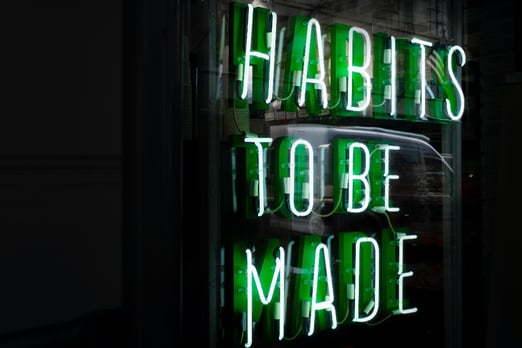Customer loyalty
What’s love got to do with it? Why brands are getting loyalty wrong
20 March 2025 • 4 min read

Loyalty programmes are everywhere, yet true customer loyalty is in decline. As more people sign up for rewards schemes, engagement is dropping.
Customers are bombarded with discounts and perks, but with rising costs and increased competition, they’re more likely to switch brands based on price than relationships.
So why are so many brands getting loyalty wrong?
The reality is that customers don’t stick around because they love a brand, they return when it meets their needs, solves a problem, or makes their life easier.
To build genuine loyalty, brands need to dig deeper: understand what drives their customers, define what loyalty should achieve, and design a programme that motivates these behaviours.
Loyalty without strategy is just guesswork
On paper, loyalty seems simple: reward customers, encourage repeat visits. But in reality, most programmes don’t move the needle.
Imagine impulse-buying a sports car. You spend hours deciding on the perfect one, considering its features, aesthetic and performance. It finally arrives, and you drive it to the end of your street. But then you wonder, where to go next?
This is how many brands approach loyalty — without a clear destination in mind.
Brands should start by defining exactly what loyalty should achieve, whether that’s driving repeat visits, increasing order value, or improving customer satisfaction.
Take Zizzi for example. Rather than launching a generic loyalty programme, Zizzi began with a clear goal: increase footfall and drive repeat visits.
By analysing customer data, they identified Gen Z diners as a key growth audience. This shaped a loyalty approach that was relevant to their lifestyle, and rewarding in ways that encouraged return visits.
The strategy was simple: if we invest X amount of money, how do we drive Y increase in custom? With clear metrics in place, Zizzi could measure loyalty’s impact not just in engagement, but in real business outcomes.
Drive customer connection through data
Successful loyalty initiatives are seamless, rewarding, and data-driven. A Circana study found that nearly 70% of European consumers now expect loyalty initiatives to be personalised and experience-led.
Brands should leverage technology and data to remove friction, using AI-driven personalisation, app integrations and behavioural insights to tailor offers to customers’ needs. Initiatives need to be constantly nurtured, using customer analytics to understand behaviours, refine your offering, and feed back valuable insights that drive your strategy.
The need for zero party data has changed how brands understand customers. Instead of relying on tracking cookies, brands now focus on gathering insights directly from customers through experiences on their own platforms, like loyalty programmes.
It has allowed customers to share information about themselves directly, providing brands with a more reliable source of insight; this data is the result of engaging and meaningful experiences. The success of Sephora, Lego and L’Oreal are testament to how they’ve seized the opportunity to deliver loyalty programmes their customers want to engage in.
Data isn’t just a driver of great experiences; it can also be an outcome.
The best loyalty programmes are living systems, designed to learn, adapt, and grow alongside your customers. When customers feel understood, they’re more likely to return.
Surprise and delight: Making loyalty memorable
With 61% of UK consumers feeling less loyal than a year ago, brands need to be more creative. A great loyalty programme creates positive emotional peaks, making customers eager to return.
Dishoom’s ‘magical matka’ is a great example. At the end of a meal, customers roll a dice for a chance to win their bill for free. It’s fun, fair, and adds an emotional touchpoint. There are further rewards online, giving Dishoom more opportunities to delight their customers.
Brands should also consider the Peak-End Rule, which states that people judge experiences based on the peak and end moments, showing why the final touchpoints matter.
For example, leaders at quick-service dining restaurants should consider how to turn an accessible dining experience into a memorable night out. By being exceptionally creative, they can make it feel like a million-dollar experience.
Getting loyalty right
The most effective loyalty programmes aren’t points-based, they are purpose-driven. At one end, loyalty must be strategic. Initiatives should plug directly into your business goals, driven by a clear commercial rationale of what matters most to your brand.
At the other, it should be an opportunity to surprise and delight customers. Brands that stand out will use data not just to track performance, but to continuously learn, personalise, and create experiences that customers genuinely care about.
Loyalty has nothing to do with brand love. It isn’t about giving customers a reason to collect; it’s about giving them a reason to come back. When done right, it’s where strategic goals and customer experience meet, delivering value in ways that are worth returning for.
At AND Digital, we enable food, beverage and hospitality leaders to deliver strategic loyalty propositions that deliver tangible business value and delight customers.
Learn more about our work for leading brands or get in touch with us to transform your digital strategy.



